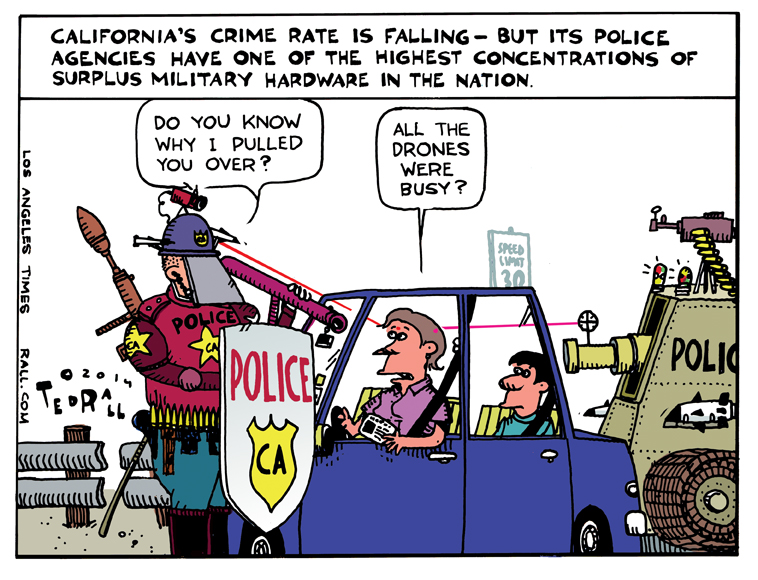SYNDICATED COLUMN: Ebola Is Here in America. Why Aren’t We Angry?

It was clear from the tone of the coverage of Ebola’s arrival in the United States that media gatekeepers expected people to be surprised by a Dallas hospital’s decision to turn away U.S. Ebola Patient Zero from the emergency room. It was, by any standard, a colossal screw-up, one that might easily have been avoided. The man was Liberian. He’d informed ER staff that he’d recently traveled to Liberia, the epicenter of the Ebola outbreak in West Africa. His symptoms — he vomited en route to the hospital — were consistent with Ebola. Despite having all the information they needed to make a proper diagnosis and having received alerts from the Centers for Disease Control to be on alert for people arriving from West Africa with flu-like symptoms, the hospital turned him loose, where he is believed to have directly exposed at least 100 people to the deadly virus.
It’s an outrageous lapse, yet Americans weren’t outraged. Why would we be? Anyone who deals with the U.S. healthcare system has experienced its systematic incompetence.
In New York City, where I’ve lived most of my life, conventional wisdom is that a visit to the ER will make whatever is ailing you worse rather than better — unless you’ve been shot. Severe vomiting? Head pressure that makes you feel like your head is going to explode? Sky-high fever? Blunt head trauma caused by a car accident? Odds are, you’ll sit on hard plastic seats in a stuffy waiting room for hour after hour, feeling nastier and nastier. The one time I got proper treatment at the ER was when the root of a mole on my chest separated from the artery into which had grown, causing it to burst into a glorious, gory explosion à la “Saw.”
“Gunshot wound!” an intern shouted when my friends carried me in.
Instant attention. Multiple doctors.
Obviously it worked out — here I still am, writing and complaining.
If you live in New York, and you’re really really sick but not visibly bleeding, you might want to shoot yourself. Hey, doc, while you’re dressing that bullet in my thigh, can you look at the dent in my skull?
The Dallas Ebola incident reminded me of an evening I spent with my friend Cole Smithey, the film critic.
“My finger is bothering me,” Cole whispered to me during a screening. After the lights came up, he showed me an index finger that had expanded to nearly double its normal width. We drew the same conclusion: an insect bite, most likely a spider. Swelling tends to be greater on extremities.
As the night wore on, however, the swelling got worse and more painful. We searched in vain for the telltale double marks of a spider bite.
Cole is a stoic guy but his agony was obvious. Around 11 pm we appeared at the emergency room of Lenox Hill Hospital on the Upper East Side of Manhattan — a stone’s throw from New York Hospital where, New Yorkers remember, Andy Warhol died of medical neglect.
We waited. The pain got worse. When we consulted the triage nurse, she took a quick look at Cole’s hand, which by then was swollen nearly down to his wrist, and told us to leave. “Go the pharmacy and get some Benadryl,” she ordered.
We followed her advice. Cole took the Benadryl and went home.
And nearly died.
Turned out he had an aggressive form of flesh-eating bacteria. Unable to sleep, he took a cab at 5 am to a private 24-hour clinic where doctors immediately recognized the symptoms and began pumping heavy-duty antibiotics via an IV.
It was touch and go for a few hours.
“Good thing you came when you did,” a doctor told him. “If you’d waited a couple more hours, you’d be dead.”
Like the Ebola failure in Texas, my friend’s near-death experience due to an idiot in the ER is an outrage — and common occurrence. Every American can tell a similar story. It’s been this way for as long as we can remember; it just keeps getting worse.
As the Ebola scare demonstrates, a nation that shortchanges its healthcare infrastructure is due for an awful reckoning. But good healthcare is incompatible with corporate capitalism. As long as medicine is a business rather than a privilege guaranteed by the government to every citizen at no cost, hospitals will be short-staffed, too small for their communities, riddled with workers who are overworked, demoralized and/or inept.
(Ted Rall, syndicated writer and cartoonist, is the author of the new critically-acclaimed book “After We Kill You, We Will Welcome You Back As Honored Guests: Unembedded in Afghanistan.” Subscribe to Ted Rall at Beacon.)
COPYRIGHT 2014 TED RALL, DISTRIBUTED BY CREATORS.COM
ANewDomain.net Exclusive: Fighting the Inhumanity
At signings people are asking me whether we should be at war against ISIS. Here, exclusive to ANewDomain.net, is my response:
Drawing comparisons to the Nazi Holocaust, corporate media (i.e., “mainstream”) pundits like New York Times columnist Roger Cohen agrees with President Obama’s argument that ISIS represents an existential threat to what they euphemistically call “American strategic interests in the Middle East” — oil, gas, pipelines, Israel, our pet dictators and autocrats — and to humanity. And humanism.
“Abu Bakr al-Baghdadi, the leader of ISIS, has created a cult of violence that makes the elimination of all nonbelievers the cornerstone of a movement whose avowed objective is a restored Islamic caliphate but whose raison d’être is the slaughter itself,” Cohen writes.
Citing Aushwitz survivor Primo Levi’s definition of the Germans’ behavior in the death camps as “counter-human,” Cohen concludes of the Islamic State in Iraq and Syria: “Presented with the counter-human, the human must fight back.”
When someone claims that someone else acts violently without cause — “senselessly,” “cowardly,” as its own “raison d’être — my bullshit detector goes off.
Read more here.
SYNDICATED COLUMN: Obama a “Reluctant Warrior,” My Ass

David Ignatius is to The Washington Post what Thomas Friedman is to The New York Times, the 50-yard line of the world as seen by political elites. Like Friedman (but minus the Mustachioed One’s tortured syntax and penchant for airport-to-Four-Seasons taxicab policy briefings), Ignatius mirrors the views of our wealthy, powerful and oblivious leaders at any given hour of the day.
Like the president and his advisors and Congress and the Pentagon brass, he never spies a crisis abroad that couldn’t be improved by firing explosives at it. Long after everyone, including even the media, tires of the carnage (in Iraq, in Afghanistan, etc.), he continues to defend it until the war’s approval ratings dip into fractions of a percentage point, at which point he pivots, bravely arguing that intervention is a mistake.
At this writing, we are at the start of America’s war cycle: (post-beheading video) anger, bombing, more bombing, withdrawal.
Obama’s bombing campaign against ISIS (the Islamic State of Iraq and Syria) in Syria is in its larval form. Which means Ignatius is cheerleading what the U.S. does best: turning living human beings into corpses.
Ignatius, a right-winger, is more pro-war than pro-Republican. Which earns the president official Ignatian praise as — no, really! — a “reluctant warrior.”
Obama, writes Ignatius, “certainly didn’t go looking for another war in the Middle East.” He “contorted himself almost to the breaking point to avoid one.” He “had no choice.”
Ignatius approvingly cites fellow Iraq War neo-con Stephen Hadley (last seen in the desert searching for Saddam’s WMDs, rather than in prison where he belongs): “Hadley noted that Obama’s stance as a reluctant warrior will help him reassure foreigners and Americans alike that this isn’t a reckless, unilatateral U.S. crusade,” Ignatius writes.
Beware of warmongers bearing the “no choice” argument. In matters of war, especially against a foe like ISIS deemed by U.S. government’s own professional intelligence analysts to pose no imminent threat to the U.S., there is always a choice.
To war or not to war?
You might also want to be wary of warmongers whose last war, and the one before, and the one before that, didn’t work out well — guys who are always, reliably wrong. Though, to be fair to Iggy, that’s also true about most of his colleagues.
More galling than Ignatius’ Lucy-and-the-football “no, really, this time really will be awesome” here-we-go-again shtick is this “mainstream” columnist’s belief that Americans can’t remember the last five years of U.S. history.
When it comes to killing, Obama is anything but reluctant. To the contrary — he makes George W. Bush look like a dirty peace hippie.
Barack Obama won the presidency in 2008 by running against the “stupid war” against Iraq. Once in office, however, he issued order after order extending said stupid war with tens of thousands of soldiers and U.S. private “contractors” (corporate mercenaries).
Obama doubled down in Afghanistan with the failed “surge” of additional troops.
It’s pretty much forgotten now, but in 2011 Obama went in deep against Libya, assassinating dictator Col. Moammar Gaddaffi with a drone. The collapse of Gaddaffi’s government opened a vacuum instantly filled by Benghazi-based radical Islamist militias and sparked a civil war that has reduced a formerly viable nation to a failed state.
Speaking of drones…
Does anyone need reminding that Obama aggressively expanded Bush’s illegal program of drone assassinations in Yemen, east Africa and Pakistan, killing thousands of people, 98% or so of whom have been innocent civilians? Or that, rather than grant the victims of the 9/11 attacks justice in the form of a trial, he ordered the assassination and midnight body dump of Osama bin Laden?
From Iraq to Afghanistan to Libya to now Iraq all over again, Barack Obama is as much of a “reluctant warrior” as Genghis Khan.
(Ted Rall, syndicated writer and cartoonist, is the author of the new critically-acclaimed book “After We Kill You, We Will Welcome You Back As Honored Guests: Unembedded in Afghanistan.” Subscribe to Ted Rall at Beacon.)
COPYRIGHT 2014 TED RALL, DISTRIBUTED BY CREATORS.COM
Can anyone identify this foot problem?
Every now and then, I reach out to my readers, the most intelligent people in the world, to help me unravel the mysteries of the world. On one occasion, for example, an entomologist who reads my column was able to identify the male dobsonfly I found in central Pennsylvania.
Today’s challenge concerns the attached photos. (No, these are not my feet.) If you know what this is, please comment.
Fungus? Athletes foot?
Thanks. (It may help the medically inclined to know that the feet are attached to someone whose immune system has been significantly compromised.)
‘After We Kill You, We Will Welcome You Back as Honored Guests’ offers an unvarnished but informed view of life on the ground in Afghanistan
‘After We Kill You, We Will Welcome You Back as Honored Guests’ offers an unvarnished but informed view of life on the ground in Afghanistan
by Peter Lewis
The Barnes & Noble Review
September 18, 2014
If You’re in San Francisco
It would be awesome, as far as I’m concerned, were you to come meet me at my book signing at the Book Passage at the San Francisco ferry terminal on the Embarcadero. This event is this coming Monday evening.
Specs:
Monday, September 22, 2014
6:00 PM
Book Passage
1 Ferry Building
San Francisco, CA 94111
LOS ANGELES TIMES CARTOON: Why the Fuzz Pulled You Over
Crime is falling in California. Yet the state’s police agencies have one of the highest concentrations of surplus military hardware in the United States. People started paying more attention to a post-9/11 Defense Department program to transfer military gear used against Afghanistan and Iraq to civilian police departments here in the United States in the wake of racially charged clashes between demonstrators and heavily armed police in Ferguson, Missouri.
California law enforcement agencies began seriously taking an interest in military style hardware after a February 1997 shootout between bank robbers and overwhelmed cops in North Hollywood. In most places at most times, however, police rarely confront criminals with that much high-powered weaponry. That’s why California Police Chiefs Association president Christopher Boyd’s claim that “all of this equipment is needed…Most police departments cannot afford to buy them” seems a bit, well, over the top.
When you have to go back nearly two decades in order to justify the need, it looks more like a reaction to a quantum singularity than a genuine necessity – and given what happened in Ferguson, there is a real concern that police militarization widens the chasm of trust between law enforcement and the communities they are supposed to serve.
You can’t blame police for wanting the most powerful weapons and the strongest defensive capabilities in order to protect officers. But policing is at least as much about politics as it is about protection. Not politics as in Democrat or Republican, but the politics of a tense relationship between free citizens, most of whom are law-abiding and pay the salaries of the cops, and municipal employees who were supposed to be more concerned about protecting the public than themselves.
After Ferguson, many of my white friends defended the police’s use of military style hardware as just good sense given the dangers of the streets in that St. Louis suburb. Then I would ask them: if you trust the police, if you’re not afraid of them, if you feel that the ultimate defense is not having done anything wrong, then how you feel when you see the flashing lights in your rearview mirror? Happy? Completely unafraid? None could honestly answer yes.
It seems counterintuitive, but this is one of those cases in which civilian oversight necessitates protecting the police from themselves by prohibiting them from protecting themselves too much.
For today’s cartoon, I push the “what if this trend continues?” envelope – but really, truly, I don’t think that we are really all that far from the dystopian nightmares portrayed by countless science-fiction novels and films. I’m 51 years old. If you’d told me, when I was 21, that the United States would become a country whose government and law enforcement officials were terrified of their own citizens, that they would treat us like surly victims of a foreign occupation army, I would have rolled my eyes. I was a cynical punk rocker back then, but things have gotten worse than I ever imagined.



